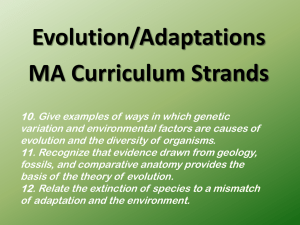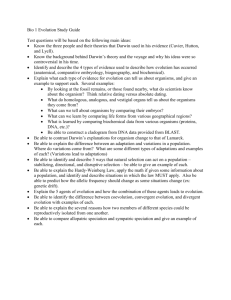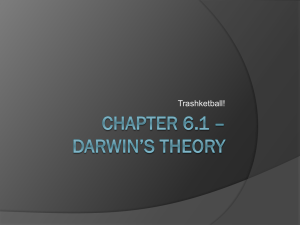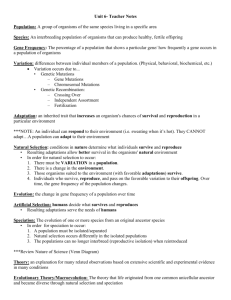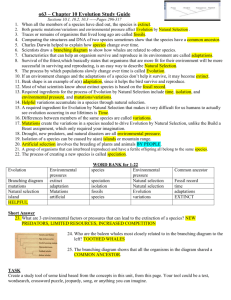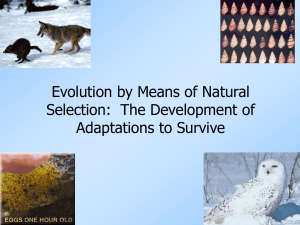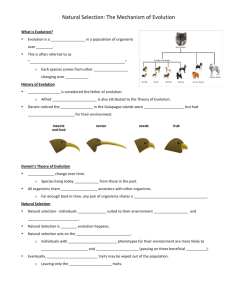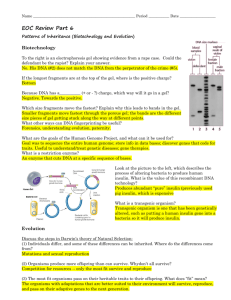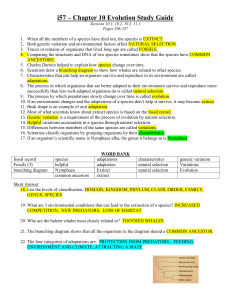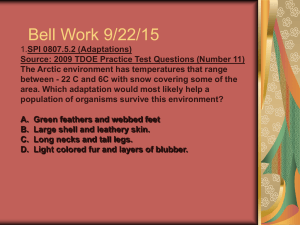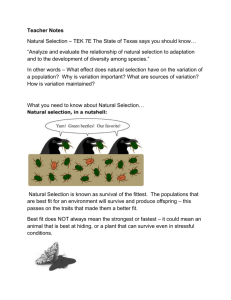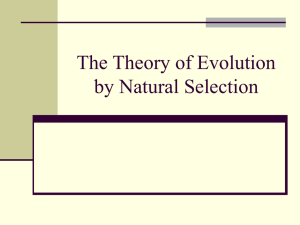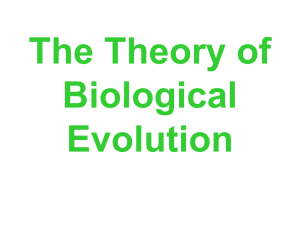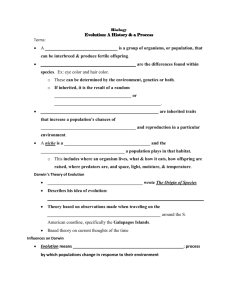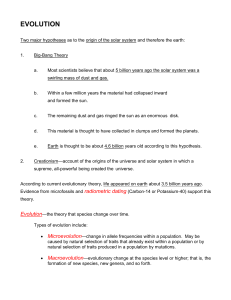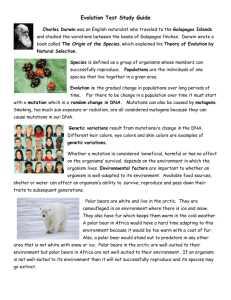Study Guide for Evolution Quiz
advertisement
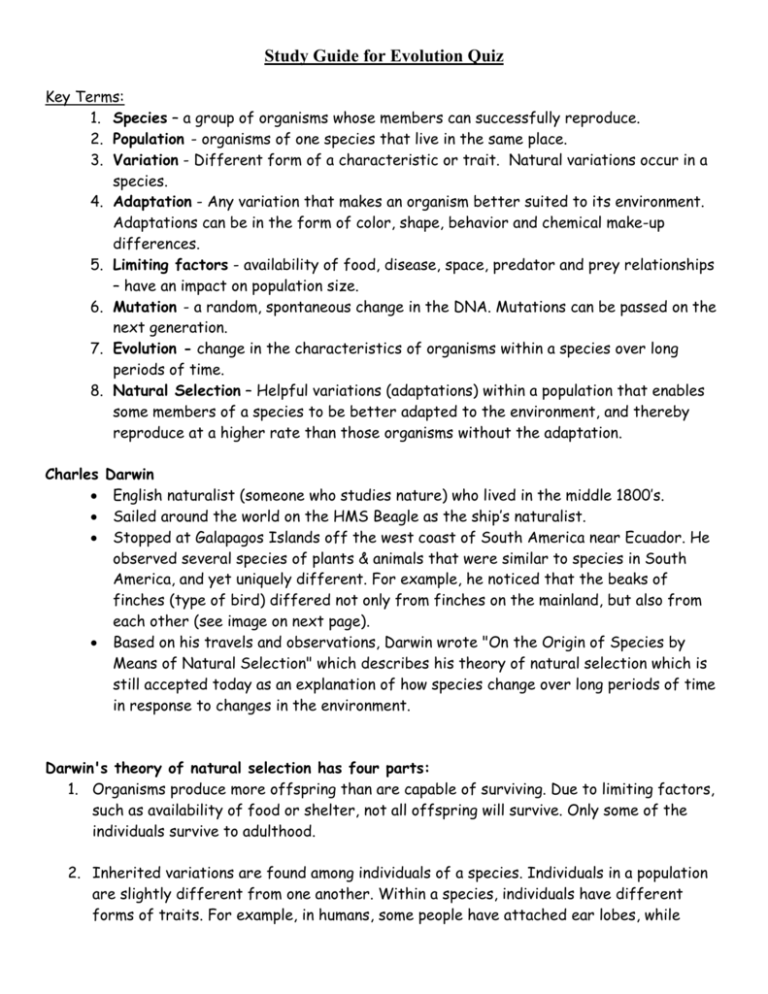
Study Guide for Evolution Quiz Key Terms: 1. Species – a group of organisms whose members can successfully reproduce. 2. Population - organisms of one species that live in the same place. 3. Variation - Different form of a characteristic or trait. Natural variations occur in a species. 4. Adaptation - Any variation that makes an organism better suited to its environment. Adaptations can be in the form of color, shape, behavior and chemical make-up differences. 5. Limiting factors - availability of food, disease, space, predator and prey relationships – have an impact on population size. 6. Mutation - a random, spontaneous change in the DNA. Mutations can be passed on the next generation. 7. Evolution - change in the characteristics of organisms within a species over long periods of time. 8. Natural Selection – Helpful variations (adaptations) within a population that enables some members of a species to be better adapted to the environment, and thereby reproduce at a higher rate than those organisms without the adaptation. Charles Darwin English naturalist (someone who studies nature) who lived in the middle 1800’s. Sailed around the world on the HMS Beagle as the ship’s naturalist. Stopped at Galapagos Islands off the west coast of South America near Ecuador. He observed several species of plants & animals that were similar to species in South America, and yet uniquely different. For example, he noticed that the beaks of finches (type of bird) differed not only from finches on the mainland, but also from each other (see image on next page). Based on his travels and observations, Darwin wrote "On the Origin of Species by Means of Natural Selection" which describes his theory of natural selection which is still accepted today as an explanation of how species change over long periods of time in response to changes in the environment. Darwin's theory of natural selection has four parts: 1. Organisms produce more offspring than are capable of surviving. Due to limiting factors, such as availability of food or shelter, not all offspring will survive. Only some of the individuals survive to adulthood. 2. Inherited variations are found among individuals of a species. Individuals in a population are slightly different from one another. Within a species, individuals have different forms of traits. For example, in humans, some people have attached ear lobes, while others have free ear lobes. Variations are caused by mutations in the DNA and can be inherited. 3. Some variations enable individuals of a population to survive and reproduce better than others. These helpful variations are called adaptations. Individuals with an adaptation have an increased chance of survival in the environment in which resources may be limited. 4. Over time, those individuals with adaptations will make up more and more the population because they are more likely to survive and reproduce. These individuals will produce offspring with the inherited adaptation that are also well adapted to their environment. Those members of a population with variations not well suited to the environment are more likely to die early or produce fewer offspring. In a population of organisms, there are two possibilities: Mutations in DNA genetic variationadaptationssurvival & reproduction OR Mutations in DNA genetic variation no adaptationsextinction
